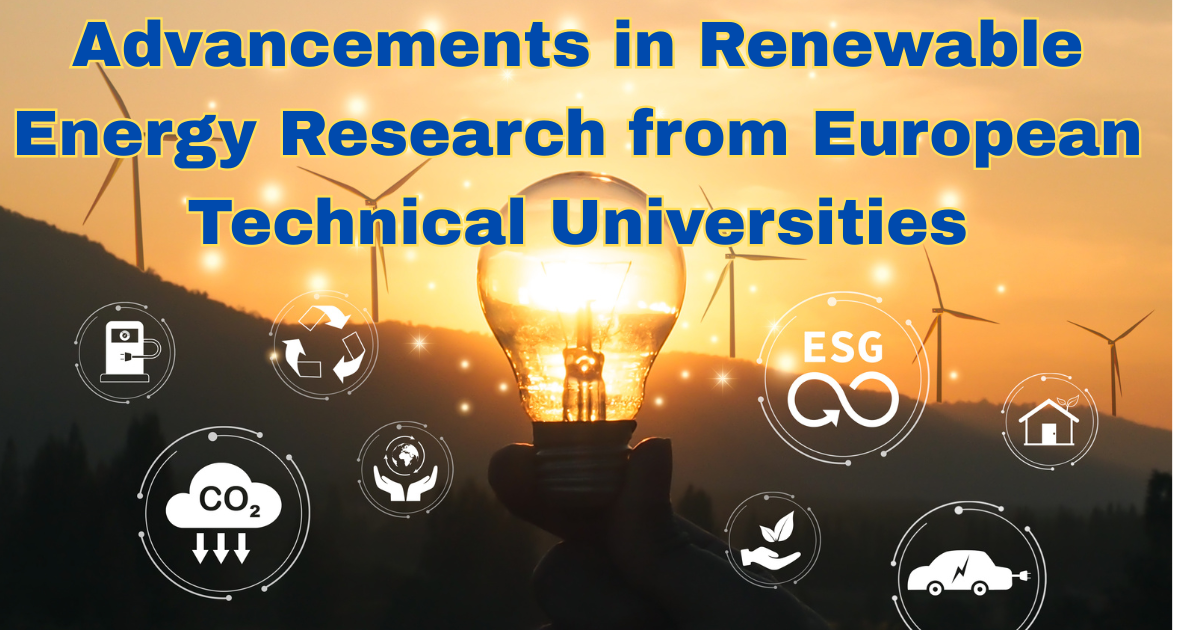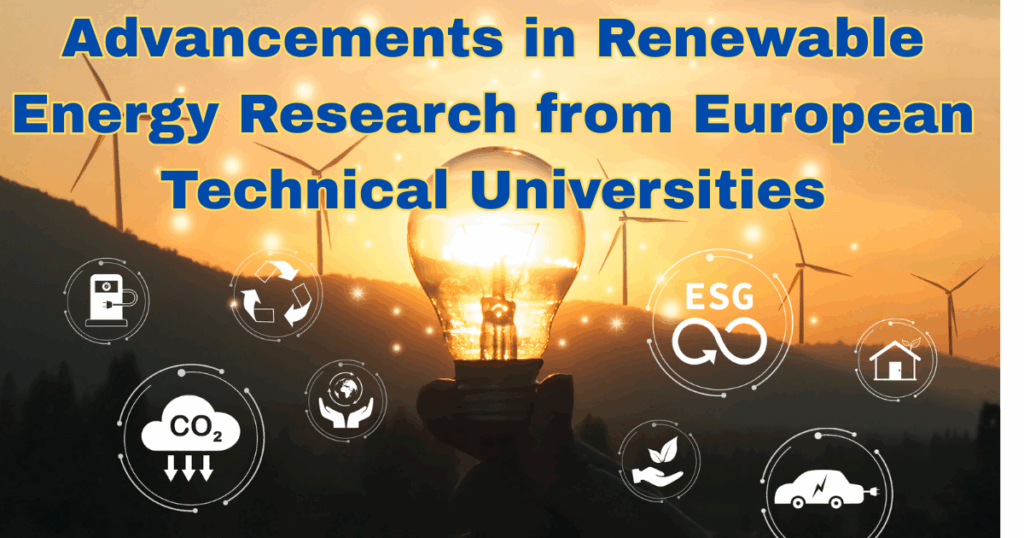Advancements in Renewable Energy Research from European Technical Universities: The objective of the two-year European Technical Universities programme is to train top-level engineers from across the world on the design of advanced control technology for the renewable energy system and to contribute to the emergence of a new generation of graduates who are needed to get Europe’s environmental and energy ambitions under the Green Deal.
Advancements in Renewable Energy Research from European Technical Universities
The complementary nature of the consortium’s partners means that students will be trained in specific fields in which the partners are internationally recognised. For example, students will be studying the control of wind energy systems, the management of energy storage, the control of solar and hydrogen systems and their integration into the grid.

In this way, EU-CORE offers a high degree of permeability between education, research innovation, soft skills, industrial needs, and environmental concerns. The European Union (EU) has embarked on a committed path toward decarbonisation. By 2030, it aims to reduce greenhouse gas emissions by at least 55%. Climate neutrality should be reached by 2050 Currently, more than 75% of the greenhouse gas emissions in the EU stem from the energy sector.
Energy transition processes regarding the exploitation of renewable energy sources
ET is dynamic processes at the national or global level that, through changes in energy production processes and use, influence the sustainable development of economies and societies. This means that the economy is switching from sources like coal, oil or gas to RES such as solar, wind or geothermal energy.
The European Union recognises the vital role that innovation in renewable energy technologies plays in accelerating the energy transition. In the largest-ever transnational research and innovation programme, Horizon Europe, the EU allocated 35% of the total budget of €95.5 billion to green technology research.
Innovations in renewable energy sources
Below are some innovations and breakthroughs in three different renewable energy sources – wind, ocean, and bioenergy.
Wind Energy
One innovation in wind energy has been the development of floating offshore wind turbines. These turbines are anchored to the seabed using cables and can be placed in deeper waters where traditional turbines are not a feasible option. For instance, Hywind Scotland , the world`s first floating wind farm, has illustrated the viability of this technology with a greater capacity than traditional offshore wind farms.
Improved blade aerodynamics are having a direct positive impact on the performance and durability of wind turbines. This helps to reduce maintenance costs and increase the lifespan of the turbines.
Ocean Energy
Oceans are the world’s largest untapped source of renewable energy, and it is believed that by 2050, ocean energy can offer 10 cents of Europe’s current electricity demand. An impressive innovation in ocean energy has been the creation of tidal stream generators. These underwater turbines harness the kinetic energy of tidal currents. They offer a reliable and predictable source of renewable energy due to the regularity of tidal cycles.
Wave energy is another type of ocean energy that captures the movement of ocean and sea waves and uses it to create electricity. A useful innovation we have witnessed in the area of wave energy has been wave energy converters.
Bioenergy
Bioenergy is a type of renewable energy created when we burn biomass fuel. Biomass fuels come from organic materials like purpose grown crops, organic waste, and harvest residues. An innovation in bioenergy has been the creation of advanced biofuels.
These biofuels provide higher energy yield and lower greenhouse gas emissions compared to first-generation biofuels made from food crops. Another has been biogas upgrading technologies. New processes like membrane separation and pressure swing adsorption enhance the quality, purity, and efficiency, making it biogas upgrading.
The increased diffusion of renewable energy sources is found to have had a positive impact on economic growth and on the reduction of both conventional energy consumption and greenhouse gas emissions.
Conclusion
In this article we discussed the advancements in renewable energy research from European technical universities. Renewable energy is reshaping the global energy landscape, offering substantial gains in energy efficiency and sustainability. These underwater turbines harness the kinetic energy of tidal currents. They offer a reliable and predictable source of renewable energy due to the regularity of tidal cycles. There are three different renewable energy sources – wind, ocean, and bioenergy.









